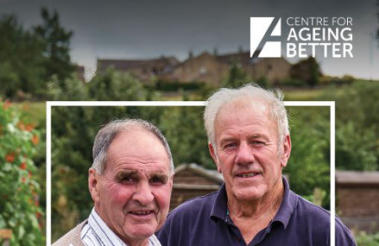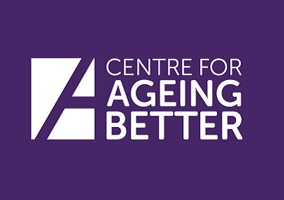To coincide with National Volunteers’ Week, we published a guide to age-friendly and inclusive volunteering. This a free resource for charities and other organisations which rely on the efforts of volunteers. It can help equip charities to better support, recruit and retain older volunteers.
Of course, many charities already do a brilliant job making older people feel welcome, included and supported. But by focussing on the same kind of volunteers – the so-called ‘civic core’ of highly engaged individuals, who are mainly healthier, wealthier and white – charities and communities are missing out on the talents, skills and enthusiasm of people who we know are less likely to volunteer in formal settings. In particular, this means those who are less well-off, in poorer health, or from a BAME background – or those whose life circumstances have changed.
Last year, we conducted a review of community contributions in later life with the Department of Digital, Culture, Media and Sport (DCMS). It identified three kinds of barriers to formal volunteering that can stop older people from giving their time – practical, structural, and emotional – and sets out key principles for overcoming them.
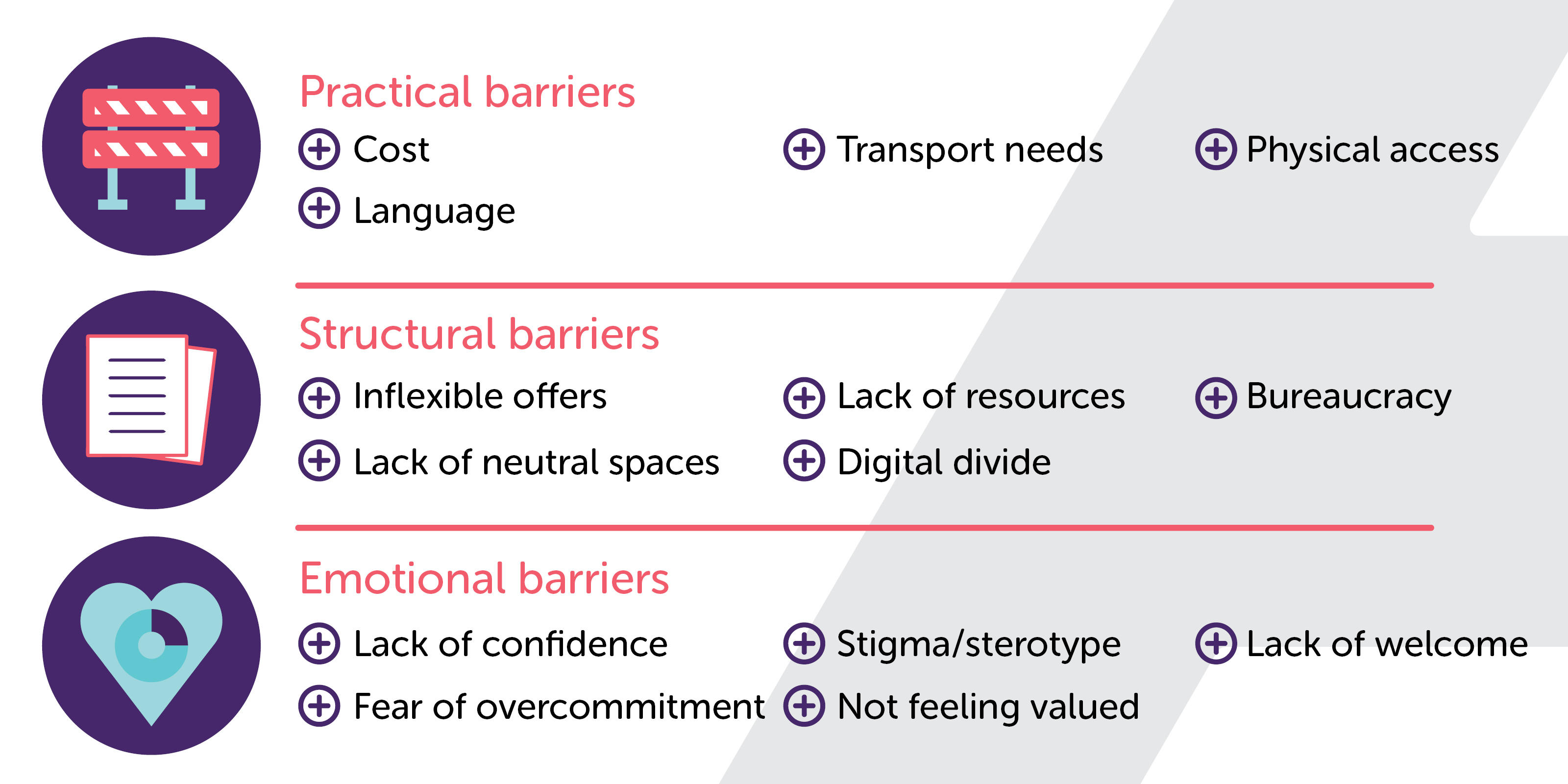
Practical barriers
Some of the most obvious barriers are the practical ones – the financial cost of travel and food, accessibility of buildings and sites, and a sheer lack of available time as people balance volunteering with work, caring responsibilities or looking after their own health and wellbeing.
These barriers can take real thought and creativity to overcome – but some solutions can be simple.
A volunteer we spoke to at Kent Coast Volunteering told us that for an event they were organising, special travel arrangements had been made for those with access needs – and those who couldn’t attend were still able to be involved by writing questions for the quiz. Making use of assets that already exist in the community, for example by organising lift-sharing systems, can help to make volunteering opportunities accessible without huge financial costs.
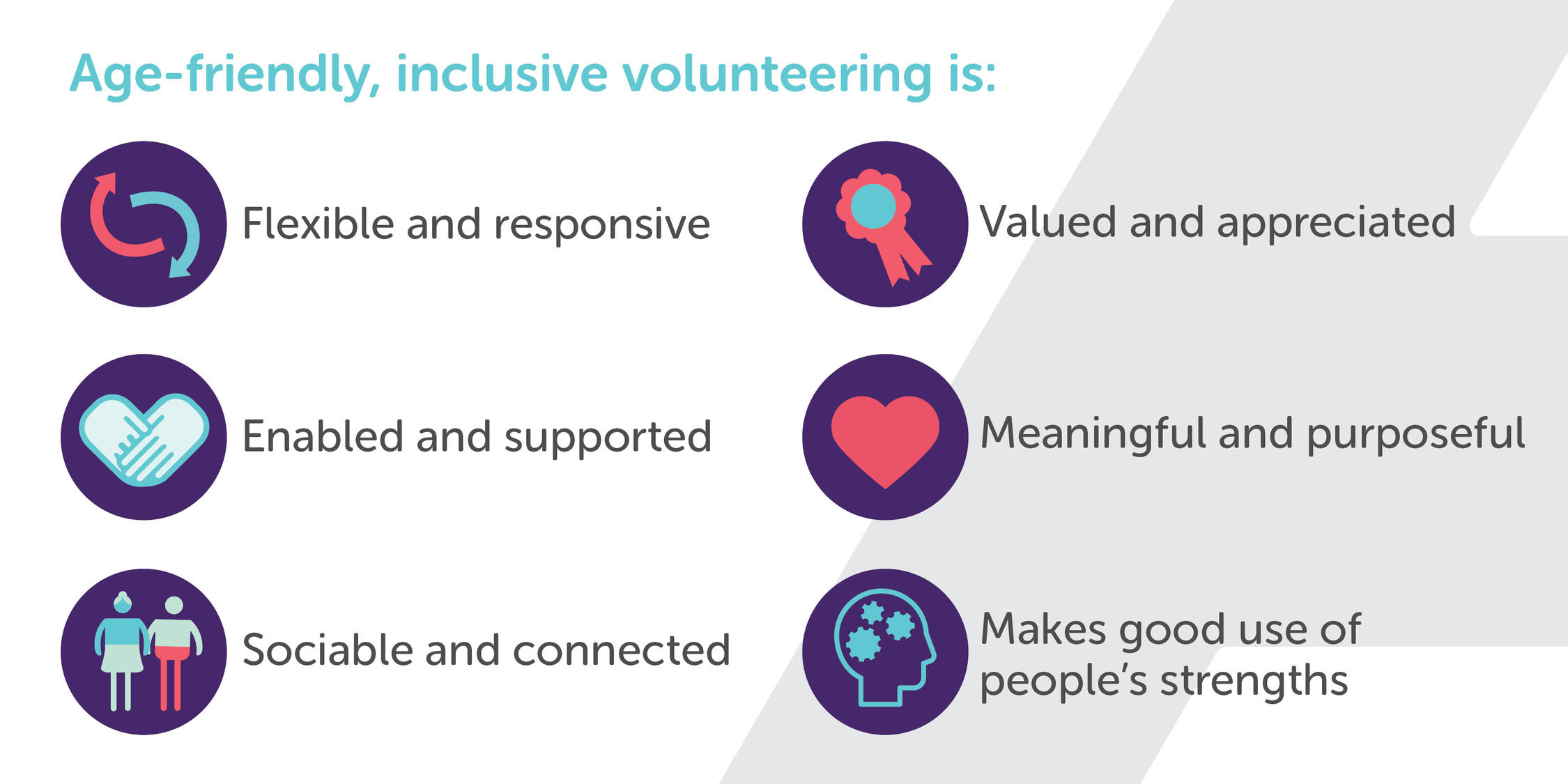
Structural barriers
Structural barriers are those put up by systems and processes, and the infrastructure and resourcing available to support volunteers.
During our review, we heard a number of ways organisations are making their volunteering opportunities more flexible. For example, the Scouts and the Trussell Trust both found that allocating tasks, not roles, to volunteers can make it easier for people to take on the amount of responsibility and time commitment that’s right for them.
In Bracknell Forest, the local authority has been working with the local voluntary sector to create a ‘volunteer passport’ which allows people to log their latest training on a secure database and carry it with them when they move between volunteering opportunities – so they don’t have to go through the same kinds of training multiple times with different organisations.
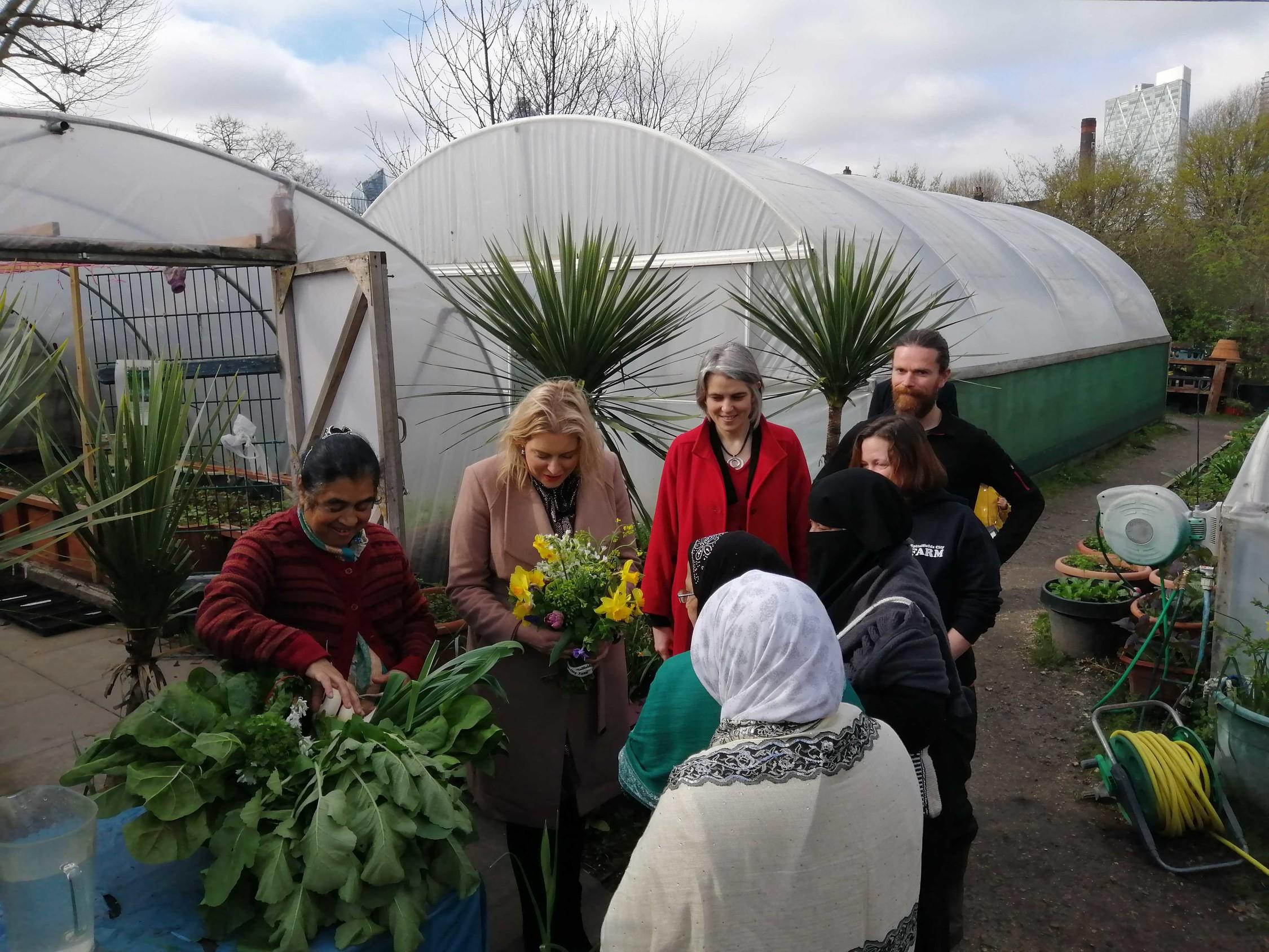
Emotional barriers
It may seem surprising, but often the most significant barriers people face to volunteering are emotional: lacking confidence, fearing over-committing and letting people down, or not feeling that volunteering is for ‘people like them.’ These can compound practical and structural barriers, especially within groups traditionally excluded from volunteering.
Step Together is an organisation supporting people who face social exclusion to access volunteering opportunities, and while they work on practical barriers like those created by criminal records or health conditions, they place a huge emphasis on psychological barriers. They offer one-to-one support to overcome feelings of shame or inadequacy and to encourage people to see themselves as someone who can contribute to their community.
Overcoming these barriers isn’t just achieved by working with potential or current volunteers, however – it’s crucial that organisations build links with other bodies where people make contributions, including community groups and faith institutions, to reflect the diversity of our communities, and to support more diverse recruitment and smoother pathways for people to move between roles and organisations as life changes. In this way people from all backgrounds feel comfortable, welcome and able to participate in ways that work for them.
If charities don’t become age-friendly and inclusive, there may be no volunteers left
We can’t afford to be complacent. Between 2001 and 2015, the total amount of time retired people spent formally volunteering fell by 25 per cent.
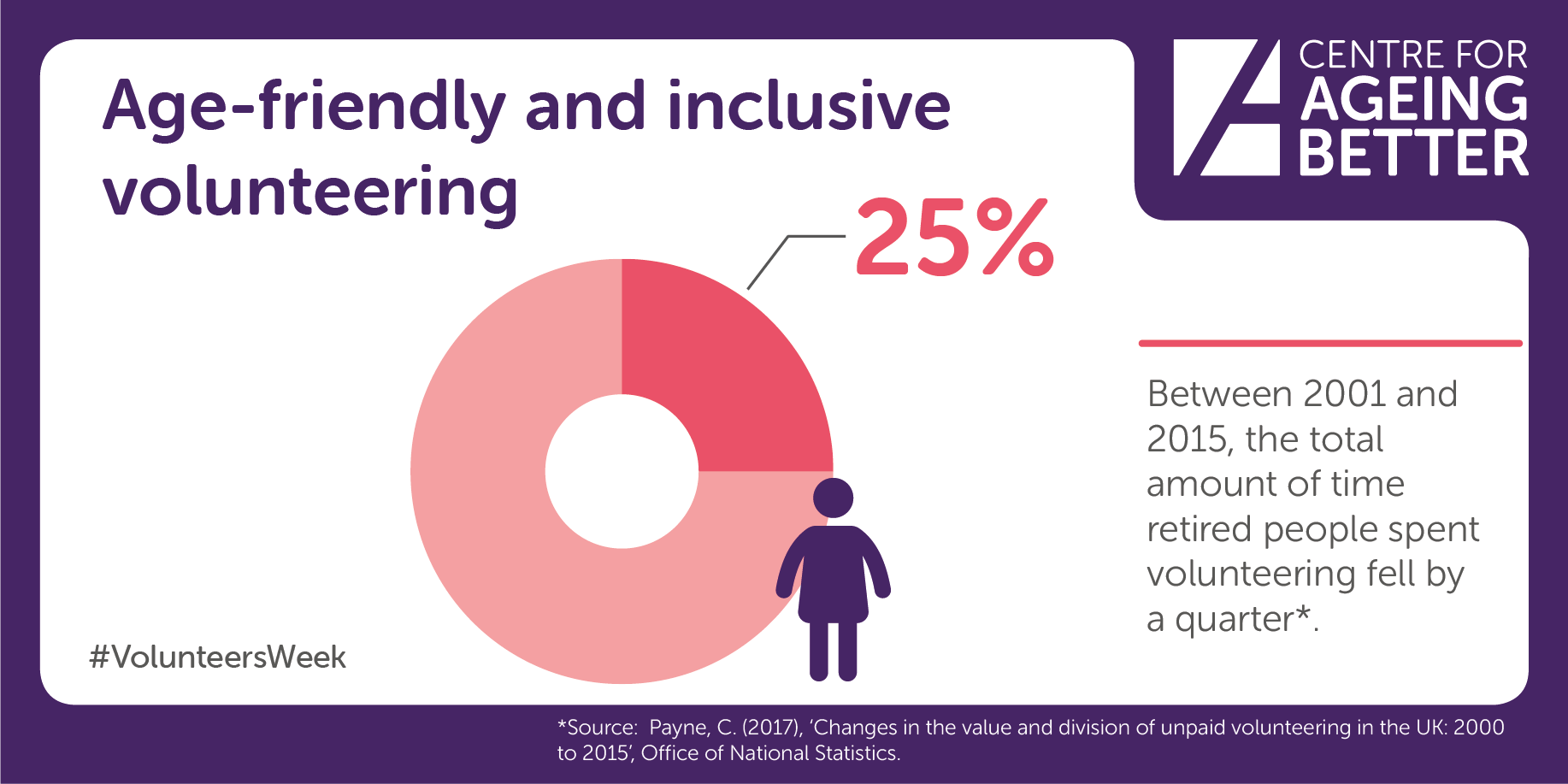
Tackling barriers to volunteering is an urgent issue – and one that we’re committed to helping organisations confront. Following our review, the Centre for Ageing Better and DCMS awarded funding to five projects around the country to pilot and share new approaches to age-friendly and inclusive volunteering.
The innovative practises these projects are trialling, and the examples I’ve drawn on here, show what’s possible when organisations put the principles of age-friendly volunteering at the heart of their work. By doing so, we can ensure that communities are able to make the most of the talents and enthusiasm of people in later life.
Rachel Monaghan is programme manager at the Centre for Ageing Better
|
Related articles



